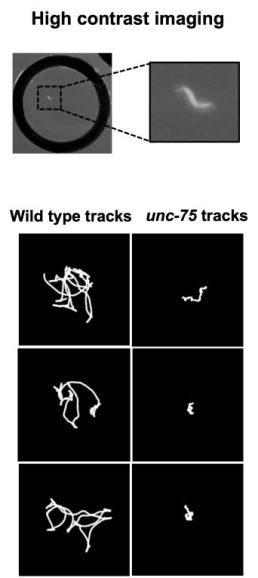When the flow of information from gene to protein is disrupted, damage or disease can be the result. Prof John Calarco’s research in the Department of Cell & Systems Biology looks at how protein-coding exons in pre-mRNA are precisely chosen and spliced together, while introns in pre-mRNA are discarded.
“When mutations occur in sequences that are normally critical for splicing regulation, that’s when things can go awry”, says Calarco. “A big challenge in the field now is to understand how the regulatory code defines specific cellular states and how they are disrupted in disease.” Calarco’s Canada Research Chair funding has been renewed to allow him to focus on this process in neurons from the C. elegans worm.
Calarco was introduced to neuronal RNA biology as an undergraduate student at the Blencowe lab at UofT. He was intrigued that RNA regulation may differ in various cell and tissue types within a single organism. Using C. elegans allows observation of the behavior of these transparent millimeter-long worms in a whole organism context from a large pool of animals.
Initial funding from CRC granted him the flexibility to experiment with different techniques in his lab even to the extent of building his own equipment for high-contrast imaging. His group produced results that showed alternative splicing patterns in individual neurons and demonstrated functional consequences in animal physiology, neuronal development, and behavior.
By inserting RNA sequences coding for fluorescent proteins into alternatively spliced genes, they observed unique fluorescence patterns in individual tissues and brain cells. Genetic studies revealed that certain mutations in splicing repressor proteins would alter fluorescent signaling.
With these findings, Calarco’s lab can further explore the regulation of alternative splicing patterns and how malfunctioning regulation can result in disease. Calarco’s lab is currently investigating how different combinations of RNA binding proteins (RBPs) play a role in guiding tissue-specific pre-mRNA splicing. The image for this story shows that worms with mutations in the unc-75 RBP barely move across the field of view compared with wild type worms. UNC75 may repress splicing in neuronal tissue through interaction with splice sites.
Importantly, Dr. Calarco emphasizes the meaningful connections he has built with other labs and hospitals over the years. “Developing a network with the community will really reinforce the work that you’re doing,” he advises. “It allows you to continue asking interesting questions in the field and fosters collaboration.”
The Canada Research Chairs Program is a prestigious award that recognizes the work of world-renowned researchers and their teams at Canadian universities. With renewed funding, Calarco’s lab will use computational analysis, genetic screening approaches, and microscopy to formulate a deeper understanding of how gene expression impacts nervous system function.
Calarco says “Acknowledgement that our current work is cutting edge in our field has made us excited and confident about the directions we’re moving in for the next five years.”
Congratulations, Professor Calarco!

